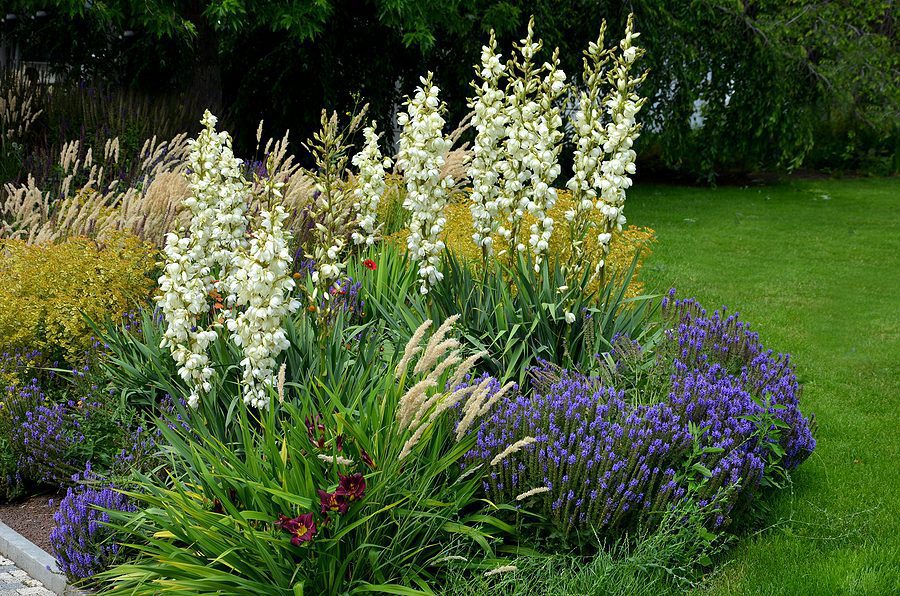What Steps Do I Need to Follow to Prepare My Perennials for Winter?

A little time spent in the fall winterizing your perennials will result in a healthier and more vibrant display next spring.
Most perennials begin to slow down and enter dormancy for the cold months in fall. Winterizing perennials means that they will return nice and healthy next spring! You simply must pay attention to your perennials in the fall when the weather has turned cold and the plants are mostly done growing. Follow these tips to help tuck in your perennials for a long winter’s nap.
Smart Strategies for Preparing Your Garden for Winter Weather
Strategy One – Take Stock
The close of the growing season is an ideal time to take stock of the perennial garden. The good and the bad of it will all be closer to memory than they will be next spring, when you will struggle to remember what happened in the last season. Examine critically, in conjunction with your vision of a space and how the plants are working.
- Which perennials did well?
- Which struggled, can any of those plants be relocated to a better spot?
- Do certain beds or borders fade in a specific season and need a shot of color?
Spend time walking through the garden and taking notes.
Strategy Two – Remove Weeds
While your perennials may begin to slow down, some of the varietals of weeds will be thriving in the cooler temperatures and many will over-winter quite well. Even small weeds can become the monster’s next spring.
Be ruthless in the garden; Pull or dig out unwanted plants, removing them by the root. If pulling weeds is difficult, water the area thoroughly to soften the soil so that the roots slip out with less effort.
Strategy Three – Water Well
In fact, fall watering is important for most plant’s winter survival. If your fall is dry and two inches or so below the surface soil feels dry, water the garden well before the ground freezes. To ensure that water penetrates more deeply than a squirt from the hose, a good practice is to run a sprinkler in your perennial beds for a period of time . Use water sparingly by applying only on the roots of the plant.
An excellent practice is to check the garden soil for moisture levels prior to any watering in fall. Stick your finger about 2 inches into the dirt to sense dryness. This helps you avoid overwatering your perennial plants- which can be as harmful as underwatering them.
Strategy Four – Clean Up Diseased or Damaged Foliage
Plants affected by insects or disease should preferably be cut back to the ground. Excessive, symptomatic leaves may be removed as part of a “purging” process, which is useful as a preventative step in avoiding the pest or disease returning next year. Conversely, leave healthy perennials in the garden throughout the winter.
The leaves provide some insulation for the plant’s crown or growing point. On top of that, the leaves and stems are excellent homes for beneficial insects and animals, and the seed heads are winter buffets for birds.
Strategy Five – Mulch Perennials Selectively
Not all plants require that additional layer of protection for winter survival. Mulch can be a problem for some plants as well, as it holds moisture against the stems, which can cause rot. Garden mulch is advised in three scenarios:
- Perennials recently installed. Those perennials that you can plant in the fall have not yet had a chance to develop deep root systems, so they also profit from mulch as an insulating layer.
- Tender perennials. Many plants that are sensitive to the coldest temperatures in your area can survive the winter when their roots are insulated with a mulch blanket.
- Places with repeated freeze-thaw cycles. Commonly found in zones 7 and 8, winter temperatures can fluctuate widely causing soil to expand and contract. This leads to frost heaving, which occurs when plants are literally pushed from the ground, leaving them susceptible to root damage.
Fall mulching of perennials is most effective when done after the top one or two inches of soil have frozen.
That mulch acts as an insulator, maintaining a cool soil temperature all winter long. Shredded leaves, bark chips, pine needled, straw, and other loose organic material make a good winter survival mulch for perennials.
